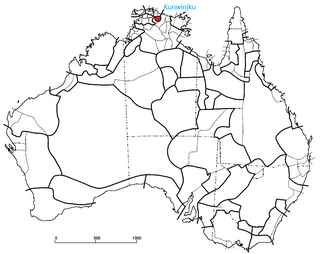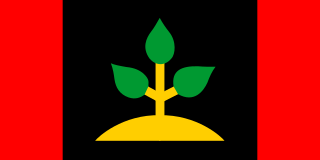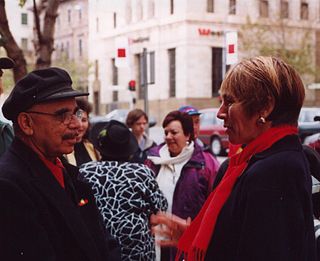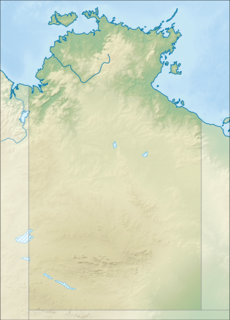 W
WAṉangu is the name used by members of several Aboriginal Australian groups, roughly approximate to the Western Desert cultural bloc, to describe themselves. The term, which embraces several distinct "tribes" or peoples, in particular the Ngaanyatjarra, Pitjantjatjara and Yankunytjatjara groups, is pronounced with the stress on the first syllable: [ˈaɳaŋʊ].
 W
WThe Arrernte people, sometimes referred to as the Aranda, Arunta or Arrarnta, are a group of Aboriginal Australian peoples who live in the Arrernte lands, at Mparntwe and surrounding areas of the Central Australia region of the Northern Territory. Many still speak one of the various Arrernte dialects. Some Arrernte live in other areas far from their homeland, including the major Australian cities and overseas.
 W
WThe Gaari were an indigenous Australian people of the Northern territory, who lived on a small island in the Arafura Sea.
 W
WThe Gunwinggu (Kunwinjku) people are an Australian Aboriginal people, one of several groups within the Bininj people, who live around West Arnhem Land to the east of Darwin, Northern Territory. Kunwinjku people generally refer to themselves as "Bininj" in much the same way that Yolŋu people refer to themselves as "Yolŋu".
 W
WThe Javanese presence in Australia has been reported by native Southeast Asian and European people over several centuries. The most renowned record is from the itinerary of Chiaymasiouro, king of Demak, and Declaraçam de Malaca e India Meridional com o Cathay by Manuel Godinho de Eredia. Chiaymasiouro describes a land called Luca Antara in Southeast direction of Java, which Eredia coined the term India Meridional. According to Chiaymasiouro's accounts, a subgroup of Javanese people already settled in those lands, but when Eredia's servant went to Luca Antara in 1610, the land had seemingly been abandoned.
 W
WThe Kaytetye, also written Kaititya, and pronounced kay-ditch, are an Aboriginal Australian people who live around Barrow Creek and Tennant Creek in the Northern Territory. Their neighbours to the east are the Alyawarre, to the south the Anmatyerre, to the west the Warlpiri, and to the north the Warumungu. Kaytetye country is dissected by the Stuart Highway.
 W
WThe Larrakia people are an Aboriginal Australian people in and around Darwin in the Northern Territory. The Larrakia, who refer to themselves as "Saltwater People", had a vibrant traditional society based on a close relationship with the sea and trade with neighbouring groups such as the Tiwi, Wadjiginy and Djerimanga. These groups shared ceremonies and songlines, and intermarried.
 W
WThe Austronesian Makassar people from the region of Sulawesi began visiting the coast of northern Australia sometime around the early to middle 1700s, first in the Kimberley region, and some decades later in Arnhem Land.
 W
WThe Murrinh-Patha, or Murinbata, are an indigenous Australian people of the Northern Territory
 W
WN'Dhala Gorge Nature Park is a protected area in the Northern Territory of Australia consisting of an area of low sand dunes, rocky outcrops, about 90 kilometres (56 mi) east of Alice Springs. It is significant principally because of thousands of Indigenous rock carvings.
 W
WThe Ngaanyatjarra, also known as the Nana, are an Indigenous Australian cultural group of Western Australia. They are located in the Goldfields-Esperance region, as well as Northern Territory.
 W
WThe Pitjantjatjara are an Aboriginal people of the Central Australian desert near Uluru. They are closely related to the Yankunytjatjara and Ngaanyatjarra and their languages are, to a large extent, mutually intelligible.
 W
WHarold Joseph Thomas is an Aboriginal Australian artist and activist descended from the Luritja people of Central Australia. He is best known for designing and copyrighting the Australian Aboriginal Flag.
 W
WThe Tiwi people are one of the many Aboriginal groups of Australia. Nearly 2,000 Tiwi people live on Bathurst and Melville Islands, which make up the Tiwi Islands, lying about 48 kilometres (30 mi) from Darwin. The Tiwi language is a language isolate, with no apparent link to the languages of Arnhem Land on the Australian mainland. Their society is based on matrilineal descent, and marriage plays a very important part in many aspect of their lives. Art and music form an intrinsic part of their societal and spiritual rituals. The Stolen Generations saw many Indigenous people brought to the Tiwi Islands who were not of direct Tiwi descent.
 W
WThe Wakaya are an Aboriginal Australian people of the Northern Territory.
 W
WThe Warlpiri, sometimes referred to as Yapa, are a group of Aboriginal Australians defined by their Warlpiri language, although not all still speak it. There are 5,000–6,000 Warlpiri, living mostly in a few towns and settlements scattered through their traditional land in the Northern Territory, north and west of Alice Springs. About 3,000 still speak the Warlpiri language. The word "Warlpiri" has also been romanised as Walpiri, Walbiri, Elpira, Ilpara, and Wailbri.
 W
WThe Warnindhilyagwa, otherwise (formerly) known as Ingura, are an Aboriginal Australian people living on Groote Eylandt in the Gulf of Carpentaria in the Northern Territory of Australia.
 W
WThe Wessel Islands is a group of islands in the Northern Territory of Australia. They extend in a more or less straight line from Buckingham Bay and the Napier Peninsula of Arnhem Land, and Elcho Island, to the northeast. Marchinbar Island is the largest of the group. Other islands include Elcho Island, Rimbija Island, Guluwuru, Raragala, Stevens Island, Burgunngura, Djeergaree, Yargara, Drysdale Island, Jirrgari Island, Graham Island, Alger Island, Abbott Island, and Howard Island.
 W
WThe Yolngu or Yolŋu are an aggregation of Aboriginal Australian people inhabiting north-eastern Arnhem Land in the Northern Territory of Australia. Yolngu means "person" in the Yolŋu languages. The terms Murngin, Wulamba, Yalnumata, Murrgin and Yulangor were formerly used by some anthropologists for the Yolngu.